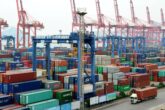March 24, 2020
The Economic Impacts of Covid-19
On March 19, the CNAS Energy, Economics, and Security (EES) program held a Twitter conversation on the impact of Covid-19 on economic and financial markets. EES Program Director and Senior Fellow Elizabeth Rosenberg posed several questions to kick off the discussion. Here are some of the top takeaways from the conversation.
How has Covid-19 hit global growth? How are its economic effects different for emerging vs. advanced economies?
The early estimates for the economic impacts of the outbreak look particularly bad. Participants pointed out estimates for possible double-digit contractions in the U.S. economy for the second quarter of this year. Those economic estimates continue to get bleaker as the scale of the outbreak becomes clearer. Policymakers likely will need to take additional steps to stabilize businesses and households and increase the prospects for a rapid economic recovery.
Other participants pointed out that there may be political pressure on the United States to ease up on enforcement actions on sanctions and anti-money laundering efforts, similar to pressures faced during the global financial crisis in 2007–2008.
What effects has Covid-19 had on supply chains for key industries, such as manufacturing, high tech, and commodities? Which effects will outlast the outbreak?
Participants highlighted that Covid-19 has affected supply chains globally and has hit all sectors, from the manufacturing of critical health equipment to the IT sector. While many are able to work from home, widespread remote working increases the opportunities for cyberattacks, which has already been documented.
Other participants noted that the Trump administration has used the pandemic to push forward a more protectionist agenda, including the possible release of an executive order that calls for curbs on importing foreign goods that are critical to the healthcare profession. It is also possible that the current tariffs on U.S. imports from China have caused shortages of these vital healthcare goods.
Finally, participants highlighted that we may be just beginning to see the effects on global supply chains. While the world has been focused on how face mask supply chains are concentrated in China, other sectors, such as chemicals and pharmaceuticals, have critical junctures in Europe, which is just beginning to shut down.
What institutions will be the bailout agents for the Covid-19 economic crisis? Are they well equipped to act?
Here, participants highlighted the critical role of the Federal Reserve in stabilizing financial markets and providing access to dollar liquidity through swap lines with other central banks. Others pointed out that the shortage of foreign exchange is particularly acute for emerging market countries, and the need for central banks to create the right mechanisms to make sure they are able to implement policy changes to provide desperately needed liquidity to global financial markets.
The pandemic helped trigger the oil price war. The oil price war precipitated a massive market sell off. What happens next? What will stabilize markets?
Participants suggested stabilization in oil prices would require cutbacks in supply, more clarity about how much demand will fall off as a result of the pandemic, and some broader market stabilization, all of which may take months. Russia and Saudi Arabia both appear to be preparing for a protracted price war. The price war will also cause serious collateral damage to other, smaller oil producing countries, and the extent of that damage is still unclear. Participants also debated the extent to which U.S. shale producers would suffer from the price war: there is likely to be significant consolidation among U.S. shale producers and serious economic pain, but Saudi Arabia and Russia will likely fail once again to permanently suppress U.S. shale producers.
How has Covid-19 shifted the U.S.-China economic competition? How will China’s economic response to Covid-19 shape its long-term growth?
Participants on Twitter noted that Beijing has pursued only a series of small rate cuts, as opposed to a full stimulus package, possibly to avoid exacerbating current high debt levels. One participant foreshadowed that even as China’s economy restarts, its policymakers will “remain disciplined” on stimulating the economy, a policy contrary to how Beijing responded to the global financial crisis in 2008 and 2009.
More from CNAS
-
Game Over?
The trade wargame suggests that sustained high tariffs could create leverage and urgency to spur action toward a productive restructuring of the international trade system....
By Emily Kilcrease & Geoffrey Gertz
-
Middle East Security / Energy, Economics & Security
Trump Inks $600 Bn Deal In Saudi Arabia | Musk, Blackrock CEO Flank Trump In Gulf VisitIn today's episode of India Global, U.S. President Donald Trump secured a $600 billion commitment from Saudi Arabia on Tuesday to invest in the United States. NDTV's Gaurie Dw...
By Daniel Silverberg
-
Energy, Economics & Security / Technology & National Security
Tariffs and Tech: An Uncertain RecipeHigher tariffs could prompt American cloud companies to shift more of their capital investments abroad....
By Pablo Chavez
-
Trump Tariffs: How Will U.S. Plans Reshape the Global Economy?
Donald Trump says he's already decided the tariffs he will impose on countries that export goods to America, including the United Kingdom. Channel 4 hears from Emily Kilcrease...
By Emily Kilcrease




